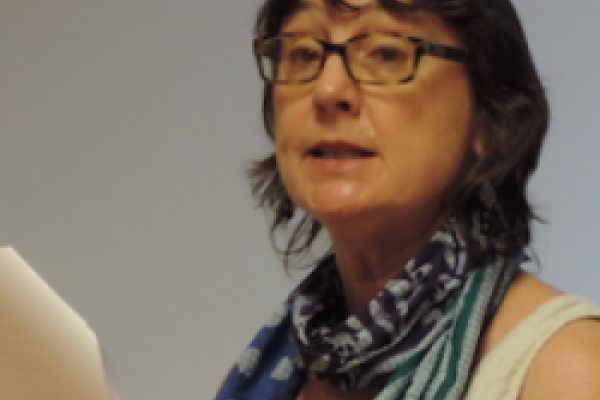
Join Dr. Katherine Borland as she discusses her research for the Comparative Studies No More Than a Page series.
Terrible Religious Experiences: Understanding the intersubjective dimensions of oral narrative performances
This research examines a set of interrelated tales told by an elderly married couple about the terrible religious experiences of their youth. It is a continuation of my exploration of the way miracle narratives evoke stories from listeners that connect formally as well as thematically with what has been previously shared in a general pattern of repetition with variation. In other words, in natural (non-interview) settings, stories elicit stories. I am interested in considering the poetics and collaborative meaning-making of the resulting whole, the multi-voiced storytelling session.
In the current essay I examine a stretch of discourse produced for me in March 1988 by my grandparents, Frank and Bea Hanson. Both were born and raised in small towns in Maine in the early 20th century, and both narrate the oppressive nature of late 19th and early 20th century Congregationalist religiosity, which they represent as an historical inheritance from the Puritans. Narrating from the position of people who left and only returned to the church a half century later (when, they report, practices and attitudes had lightened up considerably), they represent themselves in their narratives as reasonable and humane believers in comparison to an earlier generation of unreasonable, unhappy, terrible people.
By focusing on the dynamic interactions in a larger storytelling event, I discern how one listener takes up, reshapes and dialogizes the words of another as she moves from receptive audience member to responsive performer. In a further dialogizing move the second narrator cannibalizes the religious language of her opponents within her narrative to produce a bakhtinian counterstatement to their insistence that she submit to being saved. Scholarship on co-narration has generally focused on two or more people collaboratively telling one story. My essay examines how narrators who are performing discreet personal narratives in distinctive personal styles nevertheless work in tandem to produce a unified but linguistically, thematically and emotionally complex generational memory.
The analysis also complicates Michael Bamberg’s three-part model of self-positioning in oral narrative performance: the self addressed to a given audience, the self in relation to the other characters in the narrative, and the constant (moral) self. I demonstrate that narrator perspectives shift rapidly in longer stretches of discourse, making it sometimes difficult for a listener to follow. Moreover, within the story characters may stand in for other characters, providing a symbolic dimension to self-other representations. Finally, personal narratives, particularly those told in and for an intimate group, such as a family, work as constructions of group as well as individual identities.
I conclude by arguing that family offers the quintessential experience of the not me, but not not me. My grandparents’ personal narratives of childhood instruct me about a damaging religious heritage we no longer share, inviting belonging across important lines of difference.
